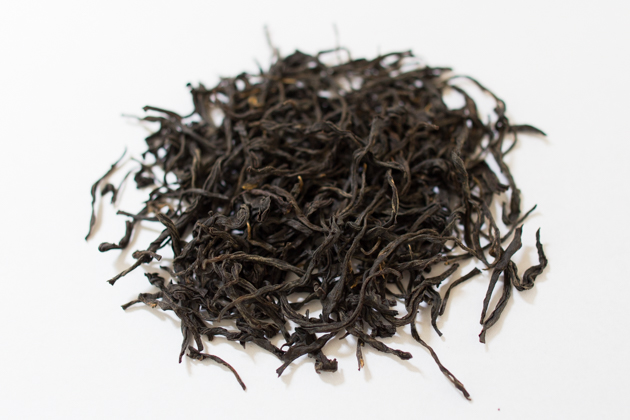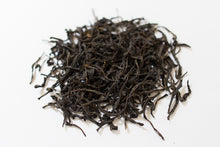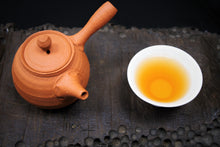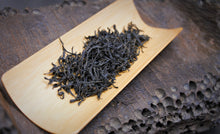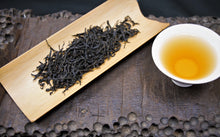
We have released Lapsang Souchong Qi Zhong. It is the most premium Lapsang Souchong in HOJO’s line-up. This tea is from Tong Mu Guan in Wuyi Mountain. Qi Zhong is seed-grown tea tree, and tea garden is totally sustainable. Unlike ordinary black tea, this unique black tea gives strong fruity flavor reminiscent of peaches and mangoes. 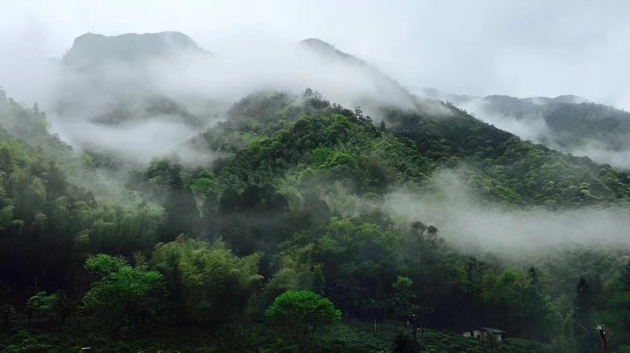
Qi Zhong: The native variety in Wuyi Mountain
Qi Zhong is the ancient tea trees in Tong Mu Guan at Wu Yi Mountain, and it is grown from seeds. The tea tree grown from seed has straight, long and bold roots. https://hojotea.com/en/posts-233/ Since the roots extend straight into the ground, it is easy to absorb minerals and it can produce tea with long-lasting and strong aftertaste. Therefore the seed-grown tea in Tong Mu Guan is highly prized by locals. HOJO purchases tea directly from tea producer and grower who owns tea garden in Tong Mu Guan. The raw material of our Qi Zhong comes from the garden located at altitude of 1200m and the age of tea trees is more than 100 years. In Tong Mu Guan, the garden is sustainable, and the grower implements natural farming method and not using fertilizers or pesticides. As a result, the tea grows very slowly, it has a strong taste, and long-lasting finishing.
HOJO purchases tea directly from tea producer and grower who owns tea garden in Tong Mu Guan. The raw material of our Qi Zhong comes from the garden located at altitude of 1200m and the age of tea trees is more than 100 years. In Tong Mu Guan, the garden is sustainable, and the grower implements natural farming method and not using fertilizers or pesticides. As a result, the tea grows very slowly, it has a strong taste, and long-lasting finishing. 
Lapsang Souchong was the original tea of Earl Grey
Lapsang Souchong is known to be the first black tea made in the history and it is very popular among tea lovers. When Charles II of England and Princess Catherine of Portugal were married in 1662, the princess brought the Lapsang Souchong that was her favourite tea. It is said that this tea had triggered the black tea drinking culture in Britain. There are many other interesting stories about Lapsang Souchong. Did you know, for example, that Lapsang Souchong was the original tea of the famous Earl Grey? It is said that the British who drank Lapsang Souchong were impressed by the sweet fruity scent. The Earl Grey was then developed when they tried to imitate the scent of Lapsang Souchong. The Earl Grey is produced from black tea with bergamot scent.
There are many other interesting stories about Lapsang Souchong. Did you know, for example, that Lapsang Souchong was the original tea of the famous Earl Grey? It is said that the British who drank Lapsang Souchong were impressed by the sweet fruity scent. The Earl Grey was then developed when they tried to imitate the scent of Lapsang Souchong. The Earl Grey is produced from black tea with bergamot scent. 
Mystery about the sweet fruity flavour of Lapsang Souchong
Reading a number of legendary anecdotes, I can't help but imagine that Lapsang Souchong as "a tea with fascinating sweet fruity flavour." However, most of Lapsang Souchong available in China and other countries gives a strong smoky scent. I suppose many tea lovers yearn for the story of Lapsang Souchong, yet when they drink this tea they were puzzled and confused by the gap between the story and the actual scent in reality. Currently, there are two types of Lapsang Souchong in Wuyi Mountain. The first type is black tea with a scent of pine smoke. This type of tea is mainly made for overseas market, while for China domestic market, they produce tea that gives distinctive fruity flavour and no smoky scent at all. Generally, tea with smoke scent is called "traditional style" or "traditional type”. It is distinguished from tea without smoke scent. In addition, the smoky tea can be divided into two types: the enzymatic oxidation is stopped right after the fermentation (oxidation) process. This type of tea gives clear flavor with a hint of fruity note in addition to the smoky scent. Another type of tea is produced where the enzyme oxidation is not stopped during fermentation process. This type of tea undergoes excessive extent of fermentation, so the tea leaves turn brown and tea has a woodsy aroma with smoky scent.  To summarize, the current Lapsang Souchong in Tong Mu Guan is divided into the following three styles:
To summarize, the current Lapsang Souchong in Tong Mu Guan is divided into the following three styles:
1. Tea with smoky scent and fruit flavor 2. Tea with smoky scent and woodsy flavor 3. Tea with fruit flavor, and without smoky scent at all. Perhaps the classic Lapsang Souchong could have been made in the similar way as the first type. Because of high altitude, in spring it is very cold in Tong Mu Guan. So, they needed to burn the pine wood and expedite the drying process. Due to this process, tea got smoky scent. The native varieties in Tong Mu Guan have a very strong fruity scent, and if the fermentation steps are carried out well and the enzymes are subsequently stopped with proper pan-frying process, the remarkable fruity scent will be formed regardless of the presence or absence of smoke scent. 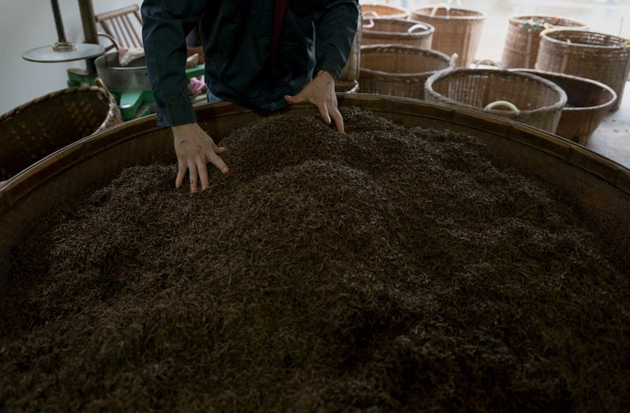
In oversea tea market, nearly everyone associates Lapsang Souchong with smoky black tea. Usually, the common Lapsang Souchong are made from teas harvested outside Wu Yi Mountain, and it gives very less fruity flavor. At present, even in Wu Yi mountain, many manufacturers process the smoky Lapsang Souchong without pan-frying to stop the fermentation ( enzymatic oxidation). As a result, tea is over fermented and no fruity flavor is developed. The Qi Zhong is the type 3. The Qi Zhong gives no smoky flavor at all. Its strikingly fruity flavor reminiscent of peaches, nectarines, mangoes, etc. In addition, thanks to high altitude, natural farming, old trees and seedlings, it has a very strong aftertaste and long-lasting lingering taste down the throat.
Further aging by charcoal baking
The most distinctive process of Qi Zhong is the charcoal baking process. The common black tea is processed as follow. 1. Withering 2. Rolling 3. Heating process to halt enzyme oxidation 4. Drying In making Qi Zhong, after drying process, the additional charcoal baking takes place. It is just like the way of making Phoenix or Wu Yi oolong. When tea is baked slowly at lower temperature, the ripening of tea is accelerated. This is the essential step to form the fruity flavor of Qi Zhong. Recently, many electric ovens are often used for baking tea. But we insisted to only purchase teas that were baked with charcoal fire. We are very aware that the taste of tea is totally different between electric oven and charcoal baking.